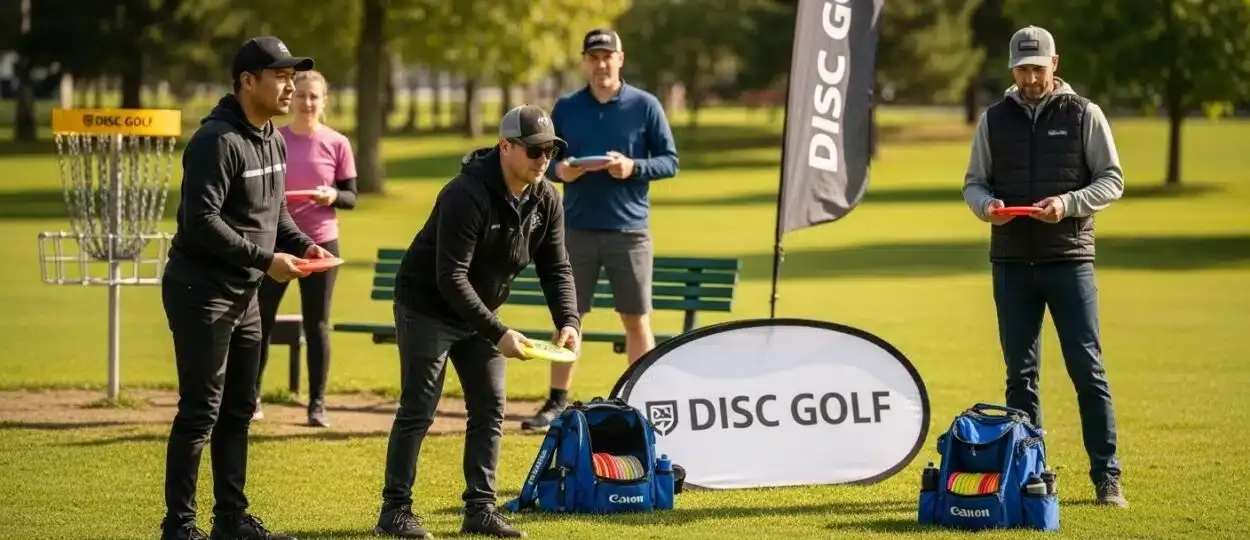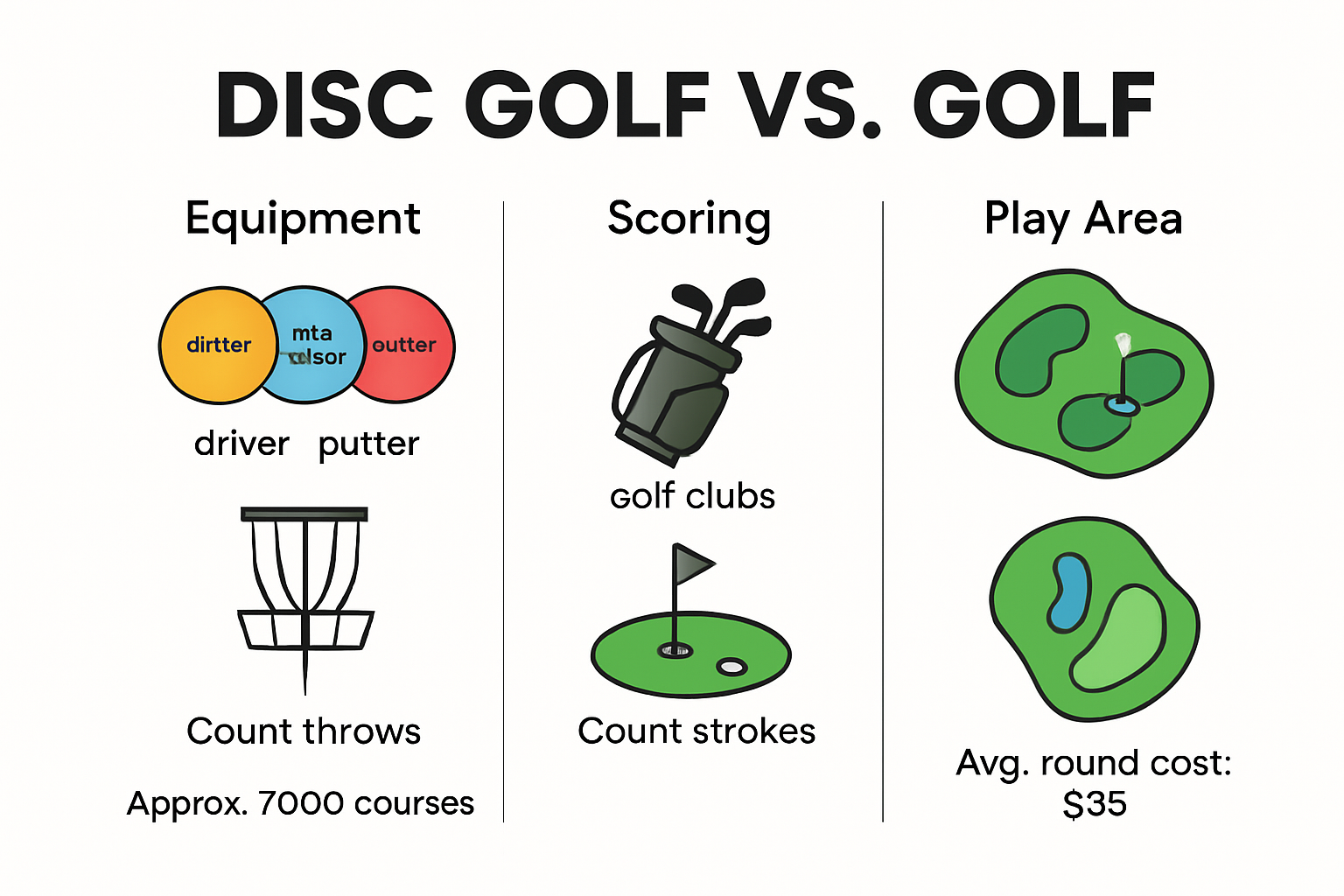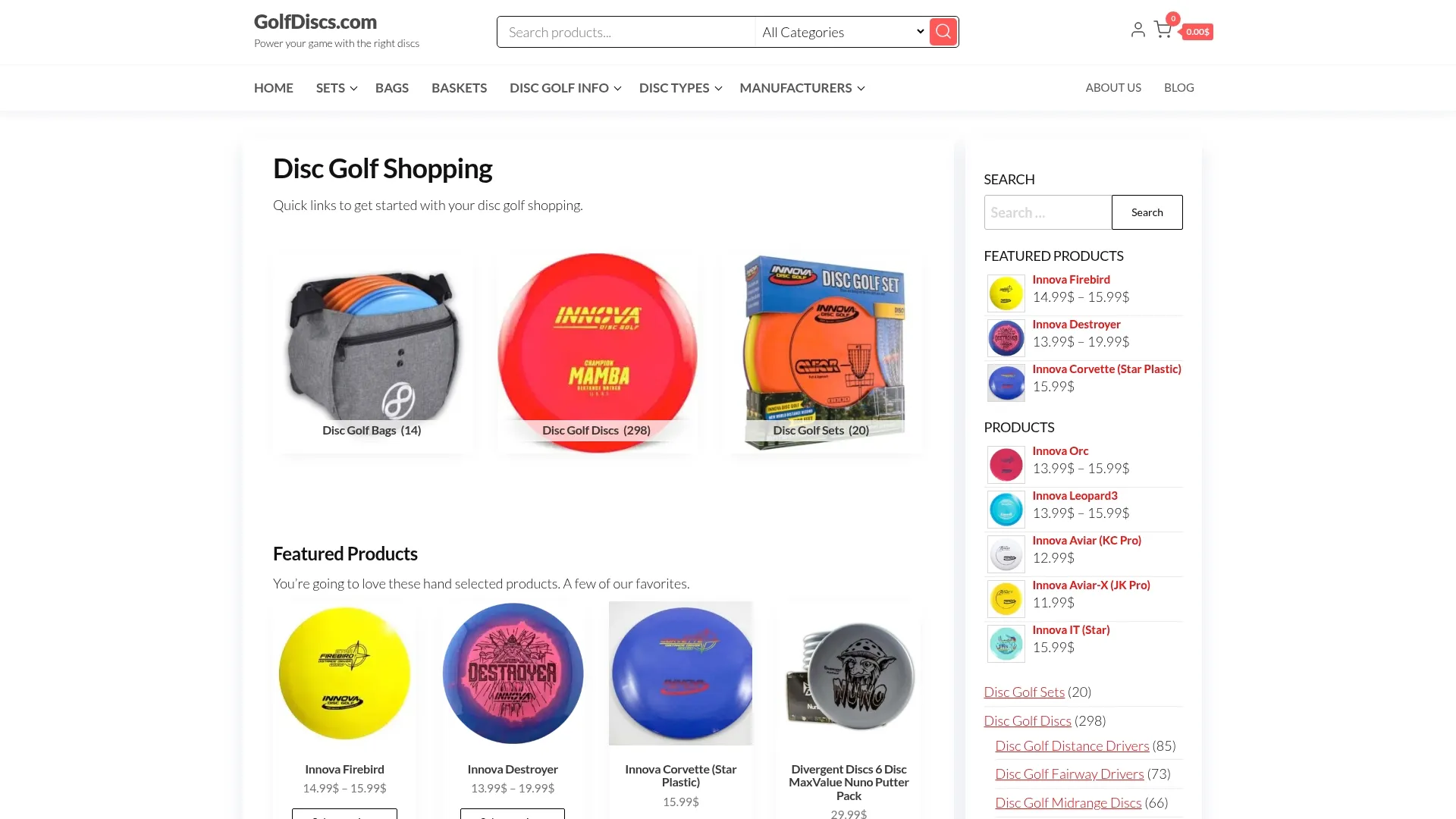
What is Disc Golf? Understanding the Sport’s Essentials
Disc golf has exploded in popularity over the past decade and there are now over 9,800 courses worldwide and more than 1.26 million active players tracked playing 20.1 million rounds in recent years. Surprised? Most people still imagine it as just tossing a frisbee in the park. The truth is, disc golf uses specialized discs, competitive rules, and even official tournaments that make it a challenging sport for all ages and skill levels.
Table of Contents
- The Basics Of Disc Golf: What You Need To Know
- Why Disc Golf Matters: Benefits And Community Impact
- Understanding The Equipment: Discs, Baskets, And Courses
- How Disc Golf Is Played: Rules And Scoring Explained
- The Growth Of Disc Golf: Trends And Cultural Significance
Quick Summary
| Takeaway | Explanation |
|---|---|
| Disc golf combines skill and fun | Players throw discs instead of using clubs and balls, aiming to complete holes in fewer throws. |
| Minimal equipment is required | Players typically need only a set of specialized discs to enjoy the game, which promotes accessibility. |
| Engage in physical and mental benefits | Playing disc golf involves walking, enhancing fitness while promoting strategy, focus, and coordination. |
| Disc golf fosters community connections | Local courses create vibrant spaces for social interaction and inclusion across varied age groups. |
| Sustainable community development | Disc golf courses transform underused parks, encouraging environmental stewardship and responsible outdoor engagement. |
The Basics of Disc Golf: What You Need to Know
Disc golf is a dynamic outdoor sport that combines the precision of traditional golf with the fun of throwing flying discs. Unlike conventional golf, players use specialized discs instead of balls and clubs, navigating through a course with the goal of completing each hole in the fewest number of throws. Explore the fundamentals of disc golf to understand this exciting recreational activity.
Understanding the Game Structure
The core objective of disc golf is remarkably similar to traditional golf. Players start at a designated tee area and aim to reach a target basket in the minimum number of throws. Each course typically consists of 9 or 18 holes, with varying distances and obstacles that challenge players’ skills and strategic thinking.
Key characteristics of disc golf include:
- Players use different types of discs (drivers, midrange, and putters) for various throwing techniques
- Courses are often set in parks, forests, or dedicated disc golf landscapes
- Scoring is based on the number of throws, with the lowest score winning

Equipment and Playing Techniques
At its core, disc golf requires minimal equipment. Players need a set of discs with different flight characteristics and weights. Drivers are designed for long-distance throws, midrange discs offer versatility, and putters help players make precise, short-distance shots into the basket.
According to the Professional Disc Golf Association, the sport has grown exponentially since its formalization in the 1970s, now boasting over 9,800 courses worldwide. This growth reflects disc golf’s accessibility and appeal to players of all ages and skill levels.
Whether you’re a casual outdoor enthusiast or a competitive athlete, disc golf offers a unique blend of physical activity, strategy, and enjoyment. The sport combines elements of precision, technique, and recreational fun, making it an engaging outdoor experience for everyone.
Why Disc Golf Matters: Benefits and Community Impact
Disc golf is more than just a recreational activity. It represents a dynamic and inclusive sport that offers significant physical, mental, and social benefits to individuals and communities. Learn about disc golf’s broader impact and understand why this sport is gaining momentum worldwide.
Physical and Mental Health Benefits
Engaging in disc golf provides a comprehensive form of exercise that combines cardiovascular activity with strategic thinking. Players walk several miles during a typical round, burning calories and improving overall fitness. The sport demands precision, concentration, and full-body coordination, making it an excellent way to enhance physical and mental well-being.
Key health advantages include:
- Low-impact cardiovascular exercise
- Enhanced hand-eye coordination
- Stress reduction through outdoor activity
- Opportunity for social interaction and community building
Environmental and Community Engagement
According to the International City/County Management Association, disc golf courses offer unique opportunities for community development.
Disc golf offers numerous physical, mental, and social benefits. The following table summarizes these main advantages for players and communities:
| Benefit Type | Description |
|---|---|
| Physical | Cardiovascular exercise, walking, improved coordination |
| Mental | Stress reduction, focus, strategic thinking |
| Social | Community building, inclusive for all ages |
| Environmental | Encourages stewardship, uses underutilized park areas |
They transform underutilized park spaces into vibrant recreational areas, promoting environmental awareness and sustainable land use. These courses often require minimal infrastructure, making them cost-effective alternatives to traditional sports facilities.
The sport also fosters community connections by creating shared spaces where people of different ages and skill levels can interact. Disc golf tournaments and local leagues provide platforms for social engagement, skill development, and community building. From youth programs to senior leagues, the sport offers inclusive opportunities for everyone to participate and enjoy outdoor recreation.
Ultimately, disc golf transcends being just a game. It represents a holistic approach to recreation that promotes physical health, mental wellness, environmental consciousness, and community solidarity. As more communities recognize its multifaceted benefits, disc golf continues to grow as a meaningful and accessible sport for all.

Understanding the Equipment: Discs, Baskets, and Courses
Disc golf requires specialized equipment that transforms outdoor spaces into dynamic playing fields. Discover the essential gear for disc golf that makes this sport both challenging and enjoyable. Understanding the unique characteristics of each piece of equipment is crucial for players at all levels.
Disc Types and Their Characteristics
Disc golf discs are not standard frisbees. They are precision-engineered tools designed for specific flight patterns and distances. Players typically carry multiple discs with varying weights, shapes, and flight characteristics. The three primary disc categories include:
- Drivers: Designed for maximum distance and initial speed
- Midrange discs: Offering balanced flight and versatility
- Putters: Used for short, accurate shots near the basket
Each disc is crafted with unique plastic compositions and weight distributions that affect its aerodynamic performance. Experienced players select discs based on wind conditions, course layout, and personal throwing techniques.
Course Design and Target Baskets
According to the Professional Disc Golf Association, disc golf courses are meticulously designed landscapes that challenge players’ skills. Standard disc golf baskets feature a central pole with hanging chains that help catch and retain discs. These targets are strategically placed in varied terrains, including wooded areas, open fields, and parks, creating unique gameplay experiences.
Course complexity varies significantly. Some courses feature relatively straightforward layouts, while others incorporate challenging elements like:
- Elevation changes
- Dense vegetation
- Water hazards
- Narrow fairways
The diversity of course designs ensures that no two disc golf experiences are exactly alike, keeping the sport engaging and challenging for players of all skill levels. Equipment standardization by professional organizations helps maintain consistency and fairness across different playing environments, allowing players to develop and refine their techniques with confidence.
How Disc Golf is Played: Rules and Scoring Explained
Disc golf combines strategic thinking, physical skill, and precise technique to create a unique sporting experience. Explore the comprehensive rules of disc golf and understand how players navigate complex course challenges while tracking their progress.
Basic Gameplay and Throwing Mechanics
The fundamental objective of disc golf is to complete each course hole in the fewest number of throws. Players begin at a designated tee area and aim to reach the target basket with minimal strokes. Similar to traditional golf, the player with the lowest total score wins the game. Each throw is meticulously tracked, and players must follow strict rules regarding throwing stance, disc release, and course navigation.
Key gameplay principles include:
- Players must throw from behind the designated tee marker
- The disc that lands furthest from the basket is thrown next
- Penalties are assessed for out-of-bounds throws or missed targets
Scoring and Competition Guidelines
According to the Professional Disc Golf Association, scoring in disc golf follows a precise methodology. Each hole has a predetermined par value, which represents the expected number of throws to complete that specific section of the course. Players track their performance relative to this par, with scoring working similarly to traditional golf:
- Throwing exactly the par number of times results in a neutral score
- Throws under par are considered “birdies” or “eagles”
- Throws over par are “bogeys” or “double bogeys”
Competitive tournaments often use standardized scoring systems that account for various skill levels and course complexities. Professional events may include multiple rounds, with cumulative scores determining the overall winner. The intricate scoring system ensures that disc golf remains both competitive and accessible to players of all skill levels, creating an engaging and dynamic sporting experience.
The Growth of Disc Golf: Trends and Cultural Significance
Disc golf has transformed from a niche recreational activity to a rapidly expanding global sport, capturing the imagination of outdoor enthusiasts and athletes alike. Uncover the fascinating journey of disc golf’s popularity and explore how this dynamic sport has evolved over the years.
Emerging Popularity and Community Development
The sport has experienced exponential growth in recent years, attracting players from diverse backgrounds and age groups. According to the UDisc app tracking metrics, disc golf has seen a remarkable surge, with over 1.26 million users playing 20.1 million rounds in recent years. This expansion reflects the sport’s accessibility, affordability, and inclusive nature.
Key factors driving disc golf’s popularity include:
- Low entry barriers for new players
- Minimal equipment requirements
- Opportunities for social interaction
- Fitness benefits of outdoor play
Environmental and Social Impact
According to research from the University of Rhode Island, disc golf represents more than just a recreational activity. It serves as a sustainable community development tool, transforming underutilized urban and natural spaces into vibrant recreational areas. The sport promotes environmental awareness by encouraging players to engage with outdoor spaces responsibly.
Unique characteristics of disc golf’s cultural significance include:
- Creating community connections across different age groups
- Providing accessible recreational opportunities
- Promoting environmental stewardship
- Offering an affordable alternative to traditional sports
The continued growth of disc golf demonstrates its potential as more than a passing trend. As communities recognize the sport’s multifaceted benefits, disc golf is positioning itself as a meaningful recreational activity that promotes physical health, social connection, and environmental consciousness. Its ability to adapt to diverse environments and attract players of all skill levels ensures its continued expansion and cultural relevance.
Ready to Experience Disc Golf for Yourself?
Have you learned the essentials of disc golf and now feel excited but a little overwhelmed about getting started? The article highlighted the challenge of understanding which discs to choose, which equipment matters most, and how to put your knowledge into action on the course. If you’re searching for the right discs, baskets, and gear to match your new skills, you deserve expert guidance and high-quality products to help you play with confidence.

Discover the difference the right disc golf equipment can make by shopping at golfdiscs.com. Our online store is designed for beginners and seasoned players alike, making it easy to find disc golf discs and gear that elevate your game. Everything you need to start, improve, or compete is just a click away. Choose the equipment trusted by passionate players across the country and experience disc golf the way it’s meant to be played. Visit golfdiscs.com today and make your next throw your best.
Frequently Asked Questions
What is disc golf?
Disc golf is an outdoor sport that combines traditional golf’s precision with throwing flying discs, challenging players to complete each hole in the fewest throws using specialized discs.
How do you play disc golf?
Players begin at a tee area and throw their disc towards a target basket, keeping track of the number of throws taken to reach the basket. The player with the fewest throws wins the game.
What types of discs are used in disc golf?
Disc golf utilizes three main types of discs: drivers for long-distance throws, midrange discs for versatility, and putters for accurate short-distance shots near the basket.
What are the health benefits of playing disc golf?
Playing disc golf offers physical benefits like cardiovascular exercise and improved coordination, along with mental health advantages such as stress relief and social interaction.
